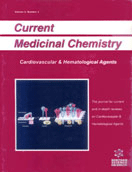Abstract
1-Azaadamantane (1-azatricyclo [3.3.1.1 3,7]decane) was synthesized in 1953, and the derivatives have been used as rigid models for studies on intramolecular charge transfer phenomena, fluorescence excitation Rydberg states, highly twisted amides, solid electrolyte gas sensors, basicities, and self-organization systems. These structures have also been attracting considerable interest due to their pharmacological activities. The substituted 1- azaadamantanes as conformationally restricted amines have great potential for the therapeutic utilization as anticholinergic agents, serotonergic agents, and squalene synthase inhibitors. However, many steps have been needed for the synthesis of 1-azaadamantanes, and the concise synthetic approaches have been developed. Though double or triple Mannich reactions yield 1-azaadamantanes in moderate yields, the reduction steps are necessary. Our recent research has revealed that trifluoromethanesulfonic anhydride is available for the convenient synthesis of 1-azoniaadamantanes and 1-azaadamantanes without reduction. The new tools for the discovery of novel drugs such as quantitative structure-activity relationship (QSAR) analysis and vibrational circular dichroism (VCD) spectroscopy have also been discussed.
Keywords: azaadamantanes, quinuclidines, acetylcholine, anticholinergic agents, serotonergic agents, squalene synthase inhibitors, structure-activity relationship, vibrational circular dichroism
 3
3













